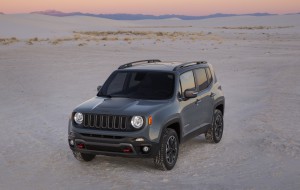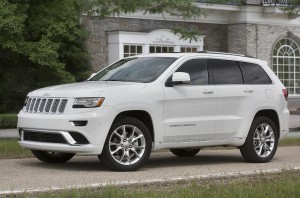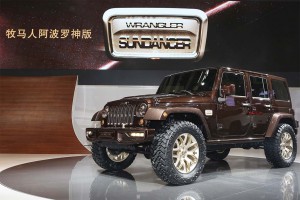
The new Renegade marked a turning point for Jeep which is producing it in Italy, rather than the US.
Little more than a domestic American brand just a few years ago, Jeep is going global, expanding both its distribution network to markets as far flung as Berlin, Beijing and Mumbai. It will soon have production facilities, meanwhile, on four continents.
The subsidiary of Fiat Chrysler Automobiles confirmed this week that it will invest $280 million as part of a joint manufacturing venture with India’s Tata Motors. The factory will produce several vehicles, including both the Jeep Grand Cherokee and an all-new model, company officials indicated.
That project is an “important step as we continue to expand the availability of Jeep products around the world,” FCA CEO Sergio Marchionne said.
Hoping to nearly double sales before the end of the decade, Jeep is putting a premium on some of the world’s fastest-growing automotive market, Brazil, China and India, with new production plans for all three.
(Click Here to learn about the planned return of the Grand Wagoneer.)
In April, Jeep celebrated the opening of a 400,000 square-foot assembly plant, part of a $2.4 billion manufacturing campus in Pernambuca, Brazil. That factory will eventually have capacity to produce 250,000 vehicles annually.

Even before the new plant near Pune opens, Jeep will build kit versions of the Grand Cherokee in India.
Italy’s Fiat has long been a dominant player in the largest South American automotive market, but FCA Chairman John Elkann referred to the Jeep operation as part of a “new chapter in (a) long, rich history.”
Jeep is a late-comer to China – sort of. It actually was the first foreign automaker to reach behind the old Bamboo Curtain when it set up shop there in 1983. But what was known originally as Beijing Jeep was handed over to former German partner Daimler AG with the break-up of the ill-fated DaimlerChrysler.
“We are showing up late to the party – not too late, but late,” said Marchionne early this year, as FCA officials finally wrapped up two years of negotiations with the Chinese. Jeep will begin producing its Cherokee model late this year as part of a joint venture with Guangzhou Auto.
Next comes India, where FCA will invest about $280 million in its Fiat India Automobiles Private Limited, a joint venture with Tata Motors – which just happens to own Jeep’s competitor, Land Rover. The factory will be based in Ranjangaon, about 30 miles from the megalopolis of Pune.
Production is set to begin in 2017 and among the products expected to come out of the factory will be an all-new SUV internally codenamed the CSUV. It is expected to slot into the Jeep family between the current subcompact Renegade and compact Liberty models.
The Jeep brand is scheduled to debut in India early in 2016, and the maker will initially sell Grand Cherokee and Wrangler models shipped to the country as CBUs, partially assembled kits.
(New Grand Cherokee delayed, Jeep says. For more, Click Here.)
While three of the new Jeep plants are going into the so-called BRIC markets – only Russia is missing – the SUV maker has also added production in Europe, a Fiat plant there last year becoming the first to produce the all-new Renegade model. In an unusual turn of events, that subcompact utility vehicle was sold first in Europe and is only now rolling into American showrooms.
With the addition of the Brazilian, Indian and Chinese plants, Jeep will boost its total production capacity by 590,000 vehicles annually. It will need every SUV it can get.
The maker’s sales topped the 1 million mark last year for the first time – with 31% of those sales coming from markets outside the U.S. The goal is to reach 1.2 million for all of 2015 and boost that to 1.9 million by 2019, according to brand boss Mike Manley.
(For more on Jeep’s growth plans, Click Here.)

